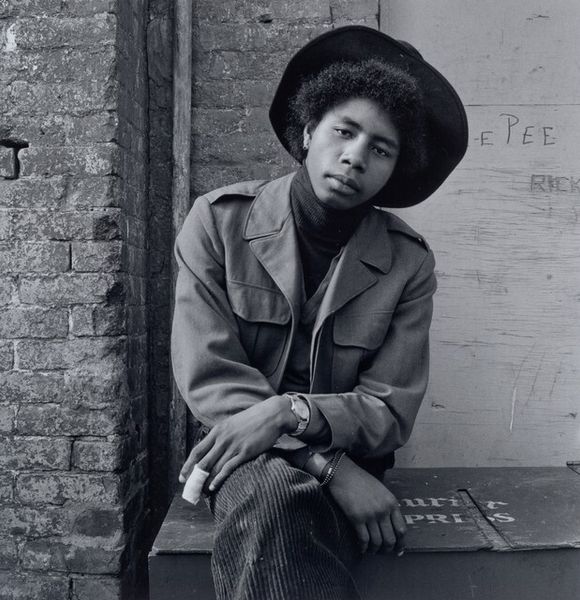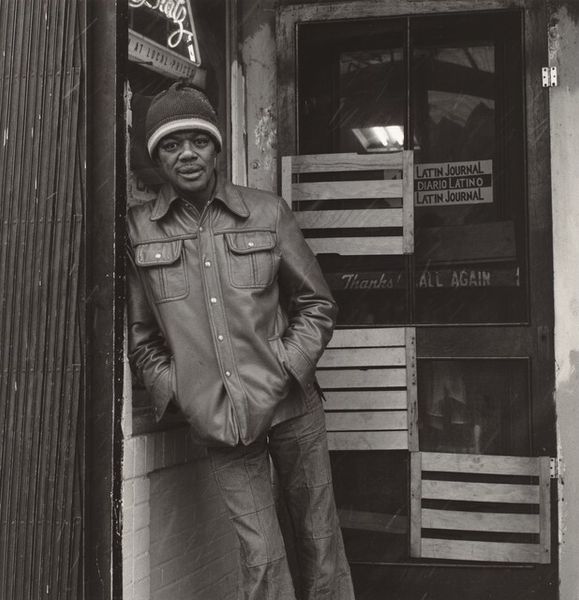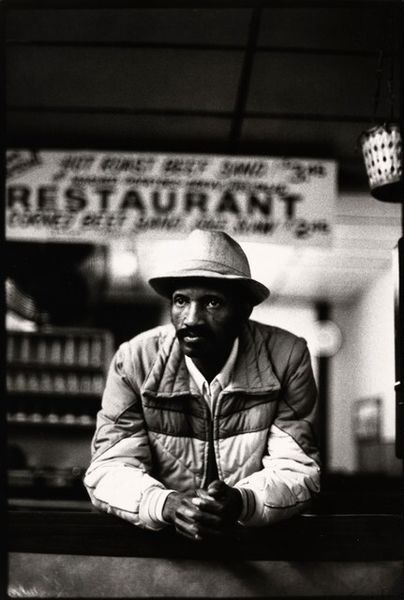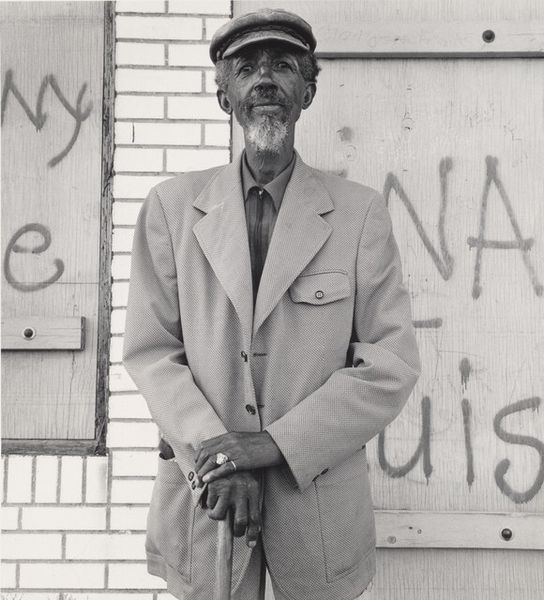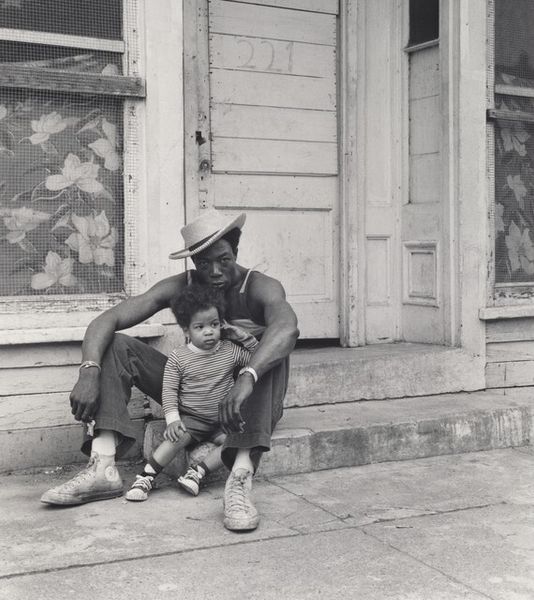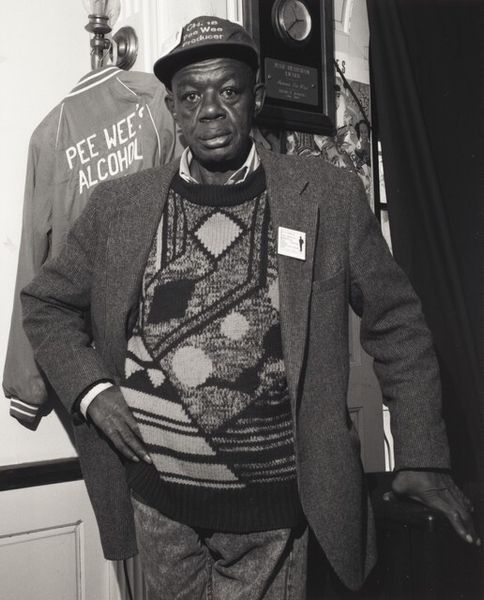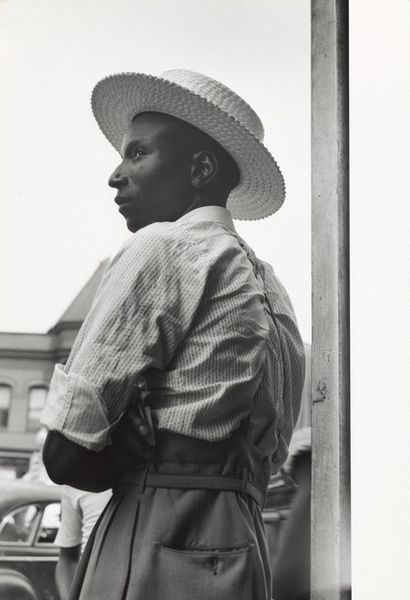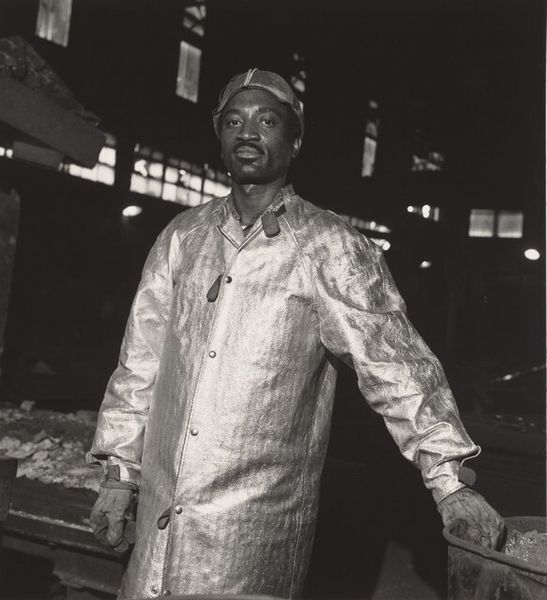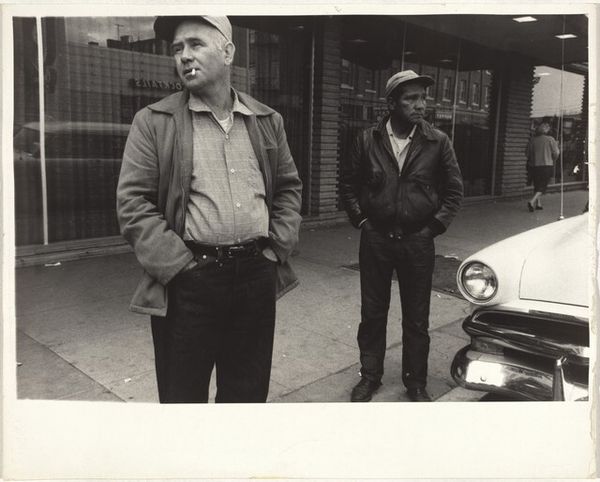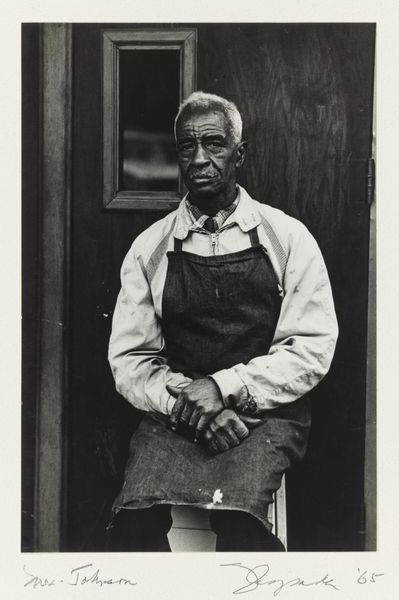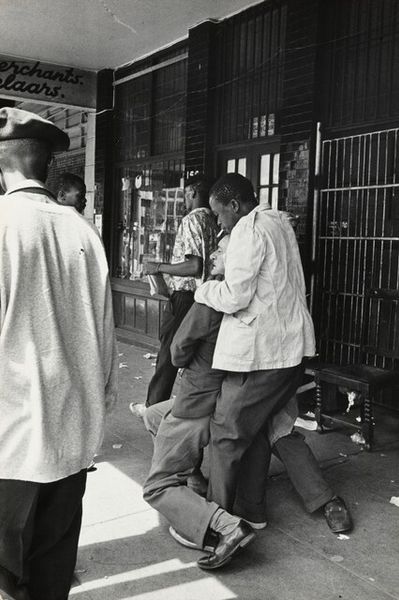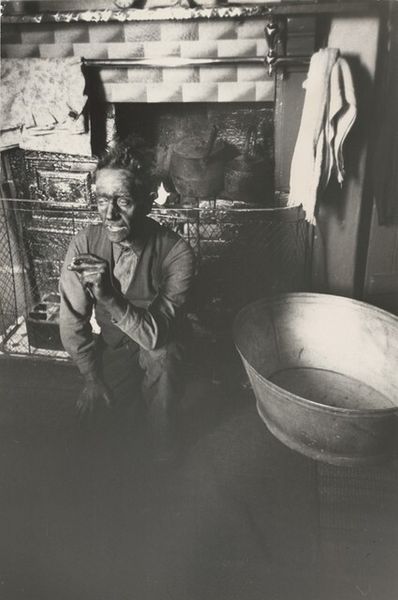
Dimensions: image: 18.6 x 16.5 cm (7 5/16 x 6 1/2 in.) sheet: 25.2 x 20.2 cm (9 15/16 x 7 15/16 in.)
Copyright: National Gallery of Art: CC0 1.0
Editor: So, this is a photograph from 1985 by Milton Rogovin, part of his "Lower West Side Series," a black and white portrait of a man named Samuel "Pee Wee" West. The starkness of the shot really hits me – a sense of quiet resilience, maybe? What do you see in this piece? Curator: This image vibrates with a cultural weight. Look at Pee Wee: the set of his jaw, the worn textures of his clothes, even the lettering on the box he sits on. It all speaks to a very specific time and place. Rogovin often photographed people overlooked by mainstream society, offering a visual counter-narrative. Does the backdrop—the brick, the barred window—tell you anything about context, and the narrative that may be inferred? Editor: I hadn’t thought of the barred window like that, more just as part of the background, but it definitely adds another layer of, maybe, constraint? Or confinement, even? Curator: Exactly. And consider Rogovin's place within the Black Arts Movement. How do you think a simple portrait like this participates in that conversation, in reclaiming visibility? It feels both simple and rich. Editor: So, it’s about making visible those stories and experiences that would normally be hidden? The details build a picture. Curator: Precisely! Think of it as visual anthropology. Rogovin uses the tools of photography to excavate layers of meaning, connecting us to a shared cultural memory. A quiet, yet very powerful statement. Editor: This really changed my perspective. Now, the image feels much more deliberate, each element carefully chosen, even the casual ones. Thanks for helping me to unpack it! Curator: My pleasure. Seeing art as a carrier of cultural memory is key, and you're clearly on that path.
Comments
No comments
Be the first to comment and join the conversation on the ultimate creative platform.
